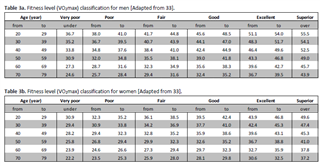Hi, I'm honestly not sure where to ask this, this forum does not seem to have space for general questions like this.
With that said, I'm currently using my forerunner to track my progress as many of you do and I noted that my fitness level is constantly below average (45% percentile). I understand I'm not a particularly sports focused person, but I try to take care of myself. I feel it can't be possible that a 30 year old that can run a 10k is below average fitness. I understand my times are not particularly impressive (about 1 hour 5 min for a 10k), but I know only a handful of people in my circle that can even run a 10k to begin with.
As a scientist and data analyst, I think these results presented to the end user must be heavily biased towards a population of people with an already above-average level of fitness, since those are more likely to spend their money in devices like this to be part of the database. I mean, in the U.S. the obesity rate is 40%, how can it be possible that people just in the threshold of obesity are capable of running 10k's?! (for context, my BMI is 22). I would really like to see a more detailed discussion on what Firstbeat is using as a benchmark for the population.
There's no discussion in Firstbeat's papers of this caveat in the data to my knowledge, which means they're either unaware of it or I'm completely unable to evaluate the population based on my personal experience, which is also possible. I feel this lack of transparency is quite concerning and that something should be done about this by Garmin.
I'm sorry if this is as ramble but I didn't see this being asked and I think a customer deserves either better data or better information on its caveats. Otherwise the users are more likely to simply disregard it, which is seen over and over in discussions in other platforms.
Thanks.




